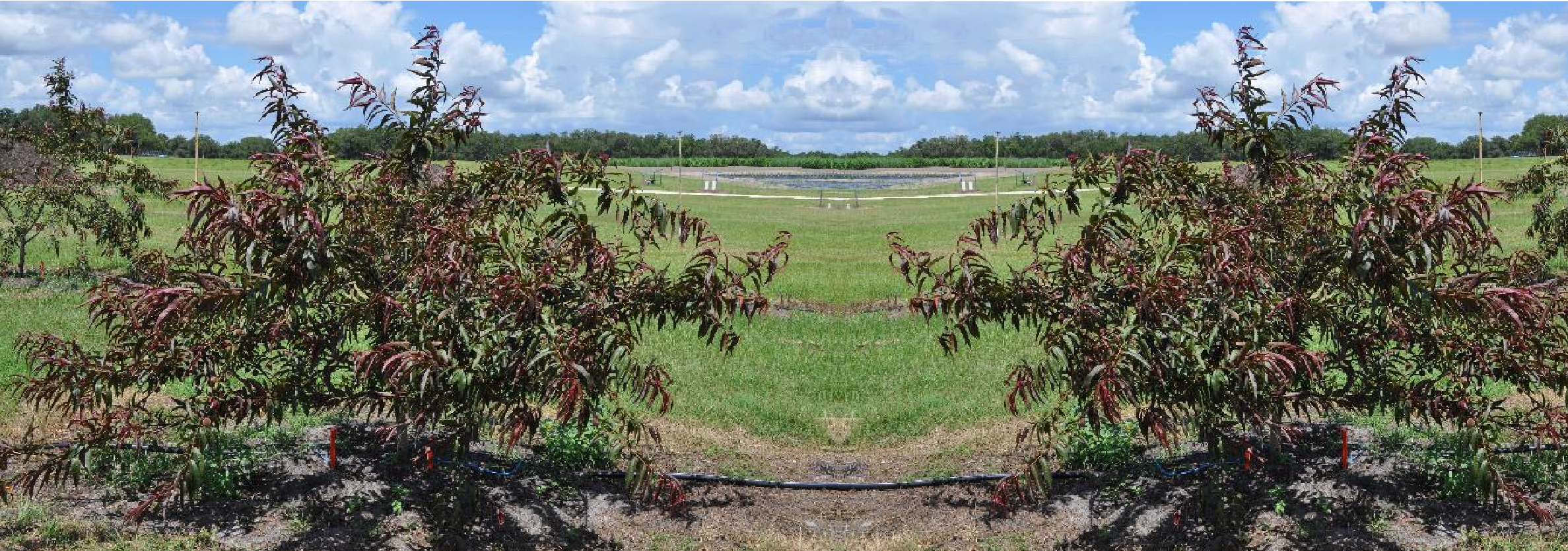‘Flordaguard’ peach rootstock is currently the only rootstock recommended for stone fruit production in Florida
‘Flordaguard’ rootstock has better resistance to M. floridensis than ‘Nemaguard’ rootstock. Field evaluation of peach rootstocks to different root-knot nematode species indicated that after 25 months, nematode egg production was greater on ‘Nemaguard’ than on ‘Flordaguard’ rootstock (Nyczepir et al. 2006). Longer-term observations in Florida also suggest that trees on ‘Nemaguard’ rootstock do not perform well in soils infested with M. floridensis. Accordingly, ‘Flordaguard’ rootstock is the only rootstock the University of Florida currently recommends for commercial peach production.
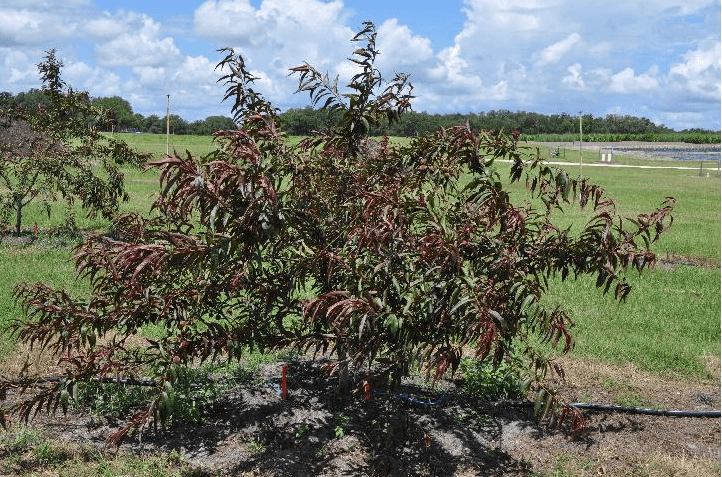
Characteristics
The University of Florida released ‘Flordaguard’, a red-leaved peach rootstock, in 1991 (Sherman et al., 1991). A copy of the original circular, S-376, can be found on the Florida stone fruit website at http://hortsci.ashspublications.org/content/26/4/427.full.pdf+html. It is the predominant rootstock found in orchards throughout the state especially in areas where M. floridensis is found.
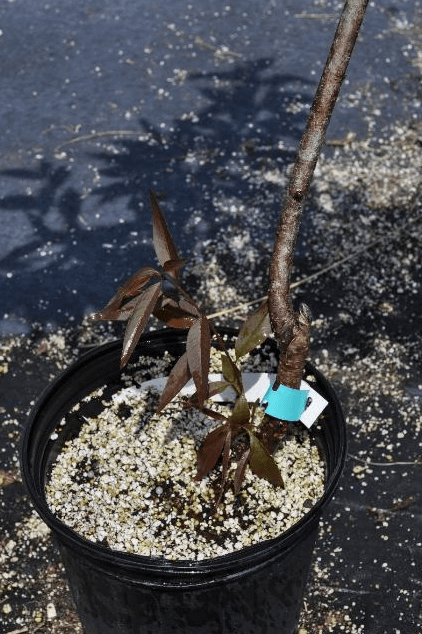
Credit: M. Olmstead, UF/IFAS
Seedlings of ‘Flordaguard’ are recommended as a rootstock for low-chill peach, nectarine, and plum production in non-alkaline soils infested with peach root-knot nematodes as well as other species of root-knot nematodes.
‘Flordaguard’ rootstock’s red-leaf trait allows for easy detection and removal of rootstock suckers (Figure 2). Rootstock suckers should be cut carefully and flush with the stem to prevent regrowth and bark injury.
Production of “Flordaguard” seedling for budding with peach varieties
‘Flordaguard’ has a chilling requirement of approximately 300 chill units and usually blooms in early February in Gainesville, FL. Trees of ‘Flordaguard’ grow and produce well as far south as Immokalee, Florida (100 chilling units), indicating it can also bloom and set fruit with fewer chilling units and warmer temperatures than observed in Gainesville.
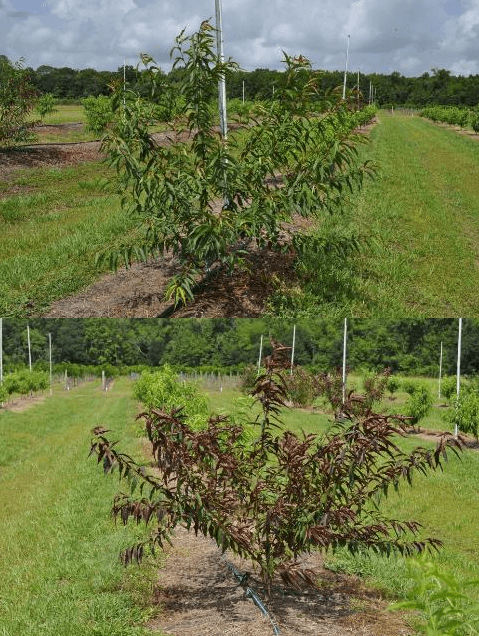
Credit: M. Olmstead, UF/IFAS
‘Flordaguard’ trees are precocious, often fruiting the second year, and they produce many self-fertile flower buds. Trees have long, whippy growth (Figure 1), and branches may need additional support to bear heavy crop loads. ‘Flordaguard’ trees can be trained to an open vase system like other peach and nectarine trees, with three to four main fruiting limbs (scaffolds). Detailed pruning can be done to remove dead or diseased limbs. Trees can set heavy crops, but fruit do not have to be thinned to produce viable seeds. Dull, red-colored fruit ripen in late June, about 130 days after bloom (Figure 6). Fruit harvesting, seed cleaning, and stratification (cold treatment) procedures are described in Table 2.
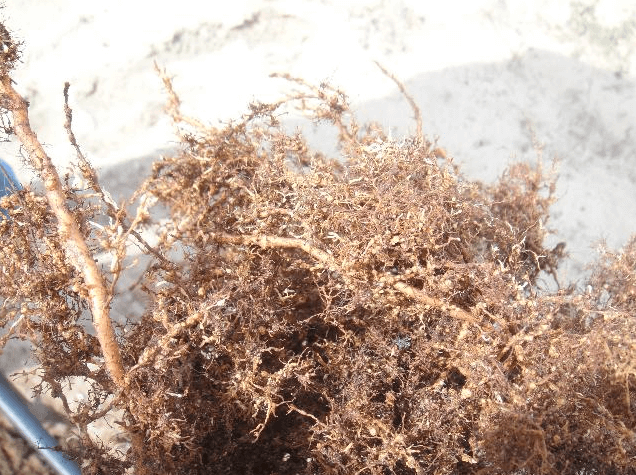
Credit: M. Olmstead
Like most peaches, ‘Flordaguard’ is self-fertile. Although flowers typically self-pollinate, pollen from other varieties can also fertilize ‘Flordaguard’. This is known as outcrossing. Outcrossing rates in peaches are generally around 6% (Beckman 1998). Outcrossed seedlings of ‘Flordaguard’ are typically susceptible to M. floridensis nematodes (Figure 4) and should be culled. Outcrossed seedlings can be identified because they lack dark red leaves in the new growth (Figure 3) and should be culled when they are approximately 6 inches tall. Another 10% of plants may need to be culled because of small stature (runts).
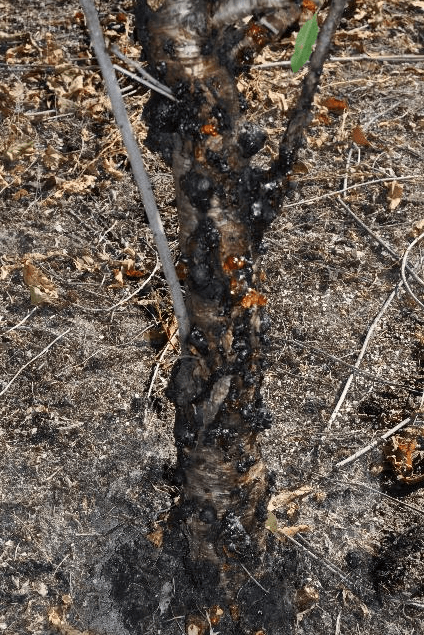
Credit: M. Olmstead
‘Flordaguard’ and its seedlings are susceptible to bark gummosis incited by the fungal pathogen Botryosphaeria dothidea, a physiological race specific to peach (Pusey 2005) (Figure 5). Scion cultivars (or the fruiting portion of the tree) budded onto ‘Flordaguard’ rootstock seedlings should be propagated as low as possible to reduce the amount of exposed, susceptible rootstock stem tissue. Peach trees budded onto ‘Flordaguard’ should be managed to reduce stress in the tree because fungal gummosis is exacerbated under such conditions. There is no effective chemical control for fungal gummosis.
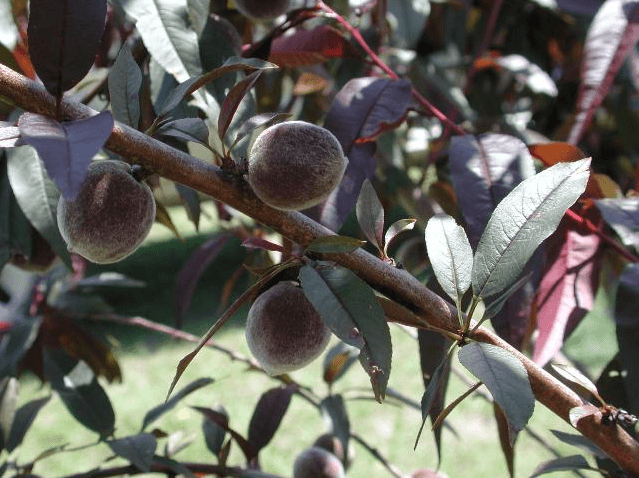
‘Flordaguard’ is not recommended for use in alkaline soils. Iron deficiency symptoms commonly occur under alkaline conditions (pH greater than 7.0) in calcareous soils (containing calcium and magnesium carbonates). This can result in yellowing of young leaves, called iron chlorosis.
Inquiry

